Keynote Forum
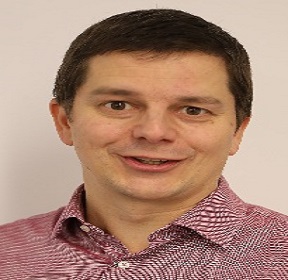
Marcel Donnet
SwitzerlandTitle: POWDER technology, more POWER in dental prevention
Abstract:
Disease prevention and maintenance of good oral health is key to success of in-clinic dental treatments for dental professionals and a healthy, happy life for patients, besides helping reduce pain and expense, more often encountered when the oral hygiene is poor. Preventive dental measures, known as oral prophylaxis are offered by dental professionals and extend to measures that patients take at home to ensure effective and long-term oral hygiene. Professional care offers deep teeth cleaning at the dental office whereas home care by individuals helps prolong its benefits. Effective removal of biofilm, the causative reason for dental diseases like gingivitis, periodontitis or tooth decay is essential for good oral health. Years of research and technological advancement has culminated into a clinical method for modern day clinical prophylaxis called "Guided Biofilm Therapy" (GBT). This state-of-the-art treatment protocol consists of eight clearly defined steps and has truly revolutionized the treatment of dental diseases and professional teeth cleaning. The paradigm change is achieved primarily from the more intensive use of powder jet technology which allows teeth to be cleaned in a comfortable, gentle, time efficient, and effective manner.
Powder technology offers a broad opportunity to professional prophylaxis thanks to the "multi-mini" impact working mechanism. This mechanism combines a minimally invasive cleaning procedure due to the small particle impact with a highly efficient procedure given the quantity of particles reaching the surface. The powder itself is very versatile and has a range of 10 different application opportunities. The smart delivery pathway of the from the powder chamber up to the tooth surface can be optimized to ensure the best treatment comfort for both the patient and the practitioner.
This presentation will immerse you in the POWER of the POWDER in PROFESSIONAL PROPHYLAXIS.
Biography:
Dr. Marcel Donnet is a Powder & Fluid Research Expert at EMS Electro Medical Systems SA (Switzerland). He is a chemical engineer with a PhD in Powder Technology. He has been carrying out academic as well as applied research for more than 20 years in interdisciplinary domains, including powders, fluids, chemical, medical and dental technologies. Over the 18 last years, his research passion was mainly directed to dental technologies and especially dental prophylaxis to offer best clinical option for both user and patient. He is instrumental in all powder related device development at EMS, from the initial powder up to the final clinical application.
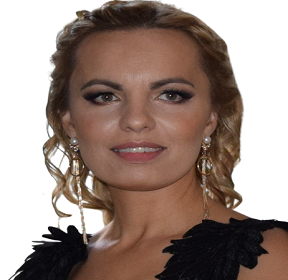
Anna Ewa Kuc
PolandTitle: Methods of Anterior Torque Control during Retraction: A Systematic Review
Abstract:
Background: There are various methods of controlling the inclination of the incisors during retraction, but there is no evidence as to the advantages of some methods over others. Research conducted by our team related to the review of the available literature identified several methods with varied effectiveness of torque control during anterior teeth retraction.
Methods: In the study of the available literature that was qualified to our study we included the patients with complete permanent dentition with the examined the maxillary incisor torque after and before retraction with straight-wire appliance and different modes of torque control where statistically significant differences in torque values of the upper incisors after orthodontic treatment were observed. The literature of our research were subjected to risk of bias and quality analyses with the ROBINS-I protocol and the modified Newcastle–Ottawa QAS, respectively
Results: Despite numerous articles published in reputable scientific journals (580 subjects) only 13 articles could be selected because only they met our criteria. All authors recognized that incisors were retroclined during retraction by 2.46° (mean difference), which was statistically significant. Statistical analysis confirmed that the differences in torque between the study group and the control group were statistically significant in most of research. We assessed our research for heterogeneity of articles in relation to their impact on the significance of the analysis performed.
Conclusion: As a result of the analysis conducted by our team we recognized that both properly performed corticotomy and en-masse retraction using orthodontic microimplants seem to be the most effective and scientifically validated methods of torque control. Just after the publication of our research an article “En-Mass Retraction of Maxillary Anterior Teeth with Severe Proclination and Root Resorption—A Case Report” appeared which also discussed the advanced retraction of incisors with the use of Tads and evaluate the difference in their inclination.
Biography:
Anna Ewa Kuc graduated from medical studies in 2004 year. She completed the specialization with a highly passed exam. Thus, she obtained the title of a specialist in prosthetics. Then she started education in the field of orthodontics and completed the 3-year postgraduate studies in orthodontics at the University of Austria in Krems, obtaining the title of Master of Science in Orthodontics. She participated in many specialist courses and trainings in the field of occlusion and orthodontics as well as treatment biomechanics with world-class lecturers. She did a specialization in orthodontics at the Specialist Dental Clinic of the Medical University of Bialystok. She connected scientifically with Wroclaw Medical University. The combination of extensive knowledge in both areas of orthodontics and prosthetics as well as many years of experience has opened the possibility for comprehensive treatment of patients and full orthodontic and prosthetic diagnosis of occlusion and malocclusion as well as often overlooked problems in the temporomandibular joints, i.e. crackling, jumping or pain, which many complain about patients, and which result from forced occlusion inconsistent with the central relation in TMJ. Thanks to this, She is able to help many patients with dysfunction of the temporomandibular joints and always use the growth potential of children and adolescents and she focus not only on eliminating the malocclusion, but also the causes of its occurrence.
She deals with orthodontic treatment of children, adolescents and adults with fixed and removable appliances. Anna always strive to recreate the natural shape of the teeth, correct occlusion (bite) and perceive the entirety of oral problems from all dental fields, including them in a comprehensive treatment plan so as to maintain the effects of treatment over a long period of time.

Title: Methods of Anterior Torque Control during Retraction: A Systematic Review
Abstract:
Background: This study evaluated a novel treatment approach using the concept of cranial facial manipulation with an oral appliance, the TicTocStop Tic Guard (TTSTG), also known as the Tic Guard, to determine its safety and efficacy in the treatment of Tourette syndrome (TS) and chronic tic disorders (CTDs). Methods: A two-center study was undertaken at the University of Tennessee Health Science Center and a facility on Long Island, New York. A total of 77 subjects enrolled between the centers upon referral from local neurologists and via Internet enrollment; 67 subjects started the study, and 58 completed the study. A licensed Cognitive Behavioral Intervention for Tics (CBIT) determined the subjects’ Yale Total Tic Severity Score (YTTSS) for tics at enrollment, after 1-week sham appliance, after 1-week Tic Guard, and after 10-weeks Tic Guard. Results: The results showed statistically significant improvement in the YTTSS with both the sham appliance and the Tic Guard with more robust improvement with the Tic Guard. The sham appliance resulted in a 25% overall reduction in tic severity, while the Tic Guard resulted in a 39% overall reduction in tic severity. There were no serious adverse events reported with either device. Conclusions: This study demonstrated significant reduction in YTTSS using the Tic Guard with no reported serious adverse events. As a result, this device could be considered for inclusion in treatment modalities offered to patients with TS/CTD.
Biography:
He helps Dentists and their Clinic/Office teams to reach new heights. Revenue, Job Satisfaction and Practice Growth are all interrelated. He learn about the Practice’s “DNA” to help implement systems and services that make sense for the patients while giving the team better job satisfaction. He work with dental teams that want to increase patient flow, practice revenue and job satisfaction. I have worked with small single office practices grossing less than 600k up to large DSO practices in excess of 500 offices. Finally, He worked with insurance companies.
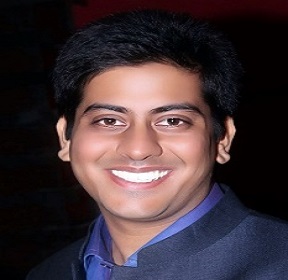
Arpit Sikri
IndiaTitle: Dental Implant Impressions
Abstract:
Dental implant is commonly known as the 3rd Dentition and is a widely used treatment modality for prosthetic rehabilitation of partially and fully edentulous patients. This primarily involves the installation of the fixtures that serve to replace the root of a natural missing tooth. According to the Glossary of Prosthodontic Terms-9 (GPT-9), dental implant is defined as a prosthetic device made of alloplastic material(s) implanted into the oral tissues beneath the mucosal and/or periosteal layer and on or within the bone to provide retention and support for a fixed or removable dental prosthesis; a substance that is placed into and/or on the jaw bone to support a fixed or removable dental prosthesis. It is rightly said “The First Impression Is The Last Impression”. This holds truly well in terms of impressions in implant dentistry that form the foundation for the success of implant prosthesis. The main objective of impression making is to record the most accurate copy of the implant analogues, implant abutments and the surrounding oral tissues thereby avoiding any kind of instabilities in the prosthetic device. Proper impressions ensure a precise fit between dental implants and the superstructure well required for the long-term success of implant-supported prostheses. This lecture will demystify the basic components, material science i.e. commonly used materials like polyether and vinyl polysiloxane impression materials, technique concepts and stepwise instructions, required for the utmost success of the implant prosthesis.
Biography:
Dr. Arpit Sikri [BDS (Gold Medallist), MDS (Prosthodontics), PGDHM, DWCOI] is currently working as Associate Professor & Post Graduate Teacher in the Department of Prosthodontics, Bhojia Dental College & Hospital, Baddi, Himachal Pradesh, India. He had earlier worked as Senior Resident in the most prestigious dental institute of the country i.e. Maulana Azad Institute of Dental Sciences, New Delhi, India. He had also worked as Senior Lecturer in Santosh Dental College, Santosh Deemed to be University, Ghaziabad (Delhi NCR) & Senior Lecturer in Sudha Rustagi College of Dental Sciences & Research, Faridabad, Haryana, India. He is the youngest dental surgeon of India to have completed his Post Graduate Diploma in Hospital Management from National Institute of Health and Family Welfare (NIHFW, New Delhi) and that too with distinction. He has also been conferred with Diplomate Fellowship in the field of implantology by World Congress for Oral Implantology (WCOI), Tokyo, Japan. Throughout his academic career, he had been awarded with gold medals being the Topper of the University, back to back. He has authored a book on “Oral Pathology” under Scientific Medtech publishers. He has to his credit around 28 books under Lambert Academic Publishing (LAP) and more than 100 national as well as international publications in various reputed journals. He is the Editor of Webmed Central, Associate Editor of Current Dental Research Journal and Assistant Editor of Asia Pacific Dental Journal & I-Dentistry journal. He is on the panel of various national and international journals as an editorial board member.
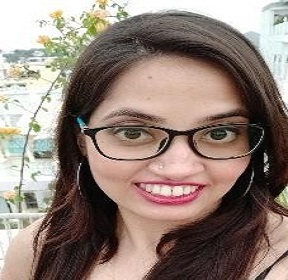
Shruti Dabi
IndiaTitle: Comparative evaluation of role of Oro-t mouthwash and Smf mouthwash as adjunct to scaling (subgingival irrigation): A randomized clinico-comparative study
Abstract:
Treatment of periodontal disease is routinely based on mechanical debridement of the tooth surface and appropriate and meticulous maintenance of oral hygiene. However, comprehensive mechanical debridement of sites with deep periodontal pockets is difficult to accomplish, therefore systemic or local administration of antibiotics are preferred. But there are various disadvantages with systemic therapy like hypersensitivity reaction, organ toxicity and bacterial resistance. So, to attained the correct required GCF concentration at the target site, led to the use of local drug-delivery system. Ayurveda system of medicine has its root in Indian subcontinent which is being globalized and practices as alternative medicine in the Western world. It is typically based on complex herbal compounds, minerals, and metal substances. Further SMF mouthwash has been used for treating OSMF patient because of its contents which enhanced its properties by improving healing capacity of the tissue. So, in this present study we have planned to evaluate & compare healing potential of both the mouthwashes which is better.
AIM
Comparative Evaluation of Subgingival irrigation Role Of ORO-T Mouthwash and SMF Mouthwash as adjunct to scaling. A clinical comparative study.
OBJECTIVE
- To evaluate effect of subgingival irrigation ORO-T mouthwash as an adjunct to scaling & root planning (SRP).
- To evaluate effect of subgingival irrigation SMF mouthwash as an adjunct to scaling & root planning (SRP).
- To compare & evaluate effect of subgingival irrigation ORO-T mouthwash & SMF mouthwash as an adjunct to scaling & root planning (SRP).
MATERIALS
Piezo- electric scalers, Oro-t mouthwash, SMF mouthwash,5 ml syringe with blunt cannula. TYPE OF STUDY- A Randomized Clinico-Comparative Split Mouth Study. SAMPLE SIZE- Split mouth study in 30 patients with 120 experimental sites with inclusion criteria involving like Systemically healthy patients, Periodontal pocket depths ranging from ≥5 mm to ≤ 7mm, Requiring Non- surgical periodontal treatment and exclusion criteria involving like patients taking antibiotics for past 6 months, Smokers /Gatka or any form of smokeless tobacco users, Periodontal therapy within past 6 months, Bony defect requiring surgical regenerative treatment and Mobility. Clinical parameters Plaque Index, Gingival Index, Bleeding Index, probing depth, Clinical attachment level were recorded at baseline, at day 14 & day 21 & were evaluated for both Oro-t mouthwash &SMF mouthwash group after giving subgingivally as a local drug delivery as an adjunct to scaling & root planing.
RESULT
Statistically significant reduction was seen for all the parameters in both the groups when compared with baseline parameters but there was no statistically significant difference between Oro-t mouthwash & SMF mouthwash.
CONCLUSION
Although there was no statistically significant difference between Oro-t mouthwash & SMF mouthwash in all the parameter’s reduction yet SMF mouthwash can be used as a local drug delivery in replacement of antibiotics (tetracycline fibers) because of its superior properties when compared with turmeric mouthwash. Further researches need to be done.
KEY WORDS-Oral Submucous fibrosis, Clinical attachment level, Oro-T mouthwash, Local drug delivery.
Biography:
Dr. Shruti Dabi completed her masters in dental surgery in the year of Aug, 2021 from Rajasthan University of health science, Jaipur (Raj.). She published 2 original research in international PubMed journals & 1 book in international journal, others are under process. Presently she is working with 4 different journals, as an Editor in 2 international journals [1 dental (PubMed journal) & 1medical (Scopus journal)] & as a Reviewer in 2 international dental journals
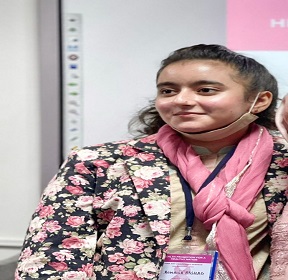
Romaisa Arshad
PakistanTitle: Impact of COVID-19 on the maintenance of student’s dental health in Islamabad, Pakistan: citywide online questionnaire survey
Abstract:
The COVID-19 pandemic has affected all aspects of our lives. Lockdowns of various severity and school closures have caused the pandemic to be associated with changes in maintenance of dental health and attitudes towards dental health, particularly in students as they stayed at home and learning was online. The purpose of my study is to evaluate the extent to which these changes took place in students. I will survey students studying in the city of Islamabad, Pakistan. For this study, an online cross-sectional questionnaire consisting of 20 questions will be conducted to a random sample of 200 students studying in schools, colleges, and universities in Pakistan. Frequency of eating and drinking, frequency of toothbrushing, flossing and use of mouthwash, occurrence of bad breath and gingival bleeding, presence of symptoms of oral ulcers, postponement of oral health care practices, experience of oral signs of stress and the need for and access to dental health care during the pandemic will be assessed. The results of this study will clarify the effects of the pandemic on changes in maintenance of dental health and attitudes towards dental health in students at a time when educational institutions were shut to stop the spread and education was from-home. The results will also be helpful in analyzing the post-pandemic attitudes towards oral health and oral hygiene and in clarifying the need for oral health education amongst students to prevent oral disease and to promote oral health.
Biography:
Romaisa Arshad is a student of Public Health pursuing a BSc in Public Health from Bahria University, Islamabad. Romaisa has done her Advanced Level (A-level) in Biology, Chemistry and Physics from Roots IVY International Schools and is studying on an Advanced-Merit Scholarship based on her grades. Her current CGPA is 3.9. She has been involved in health education and health advocacy work in her college and university both and is currently working on her university’s own Public Health Society to ensure health education among the students and faculty. Romaisa runs her own social media blog named ‘Figuring out Public Health’ for the purpose of sharing health information and fighting misinformation. Romaisa has volunteered for the Pink Ribbon twice, running a Breast Cancer Awareness and Fundraiser drive in 2 educational institutes of Pakistan, also a member of Amnesty International. Her last research project was on Digital Health in Pakistan- how the lay person is adapting to the current digital health ecosystem. Romaisa grew up in Rawalpindi city of Pakistan, is passionate about public health, health promotion, advocacy and social mobilization and is determined to make a positive impact on her surroundings.
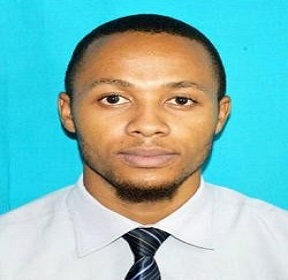
Winfried Mgaya
TanzaniaTitle: Oral health care seeking behavior among patients visiting dental clinics in rural and urban Songea in Tanzania
Abstract:
Oral care seeking behaviours can be described with data from information such as the time difference between the onset of illness and getting into contact with a dentist and reason for not seeking help. Dental care seeking behaviours include all behaviours associated with establishing and maintaining a healthy oral state and reducing impact and progression of a dental problem. Main problem in dental seeking behaviour is the late attendance to the clinic. This may be due to various reasons such as inaccessibility to dental care facility, lack of time, high cost of treatment, lack of awareness and ignorance. Objective of the study was to describe pattern of patient attendance and factors influencing oral treatment seeking behaviour among patients visiting dental clinics in rural and urban Songea. Descriptive cross-sectional was the study design used in this research. The study was conducted in dental clinics located in Songea Regional Hospital (located in Songea town) and Peramiho dental clinic (located in Peramiho village). All adult patients who attended dental clinic during the study period and agreed to participate in the study were the participant of the study. A sample size of 81 was recruited into the study and a self-administered questionnaire was used to collect study variables including; age, gender, residence, level of education, type of symptoms, accessibility to oral health centre and number of previous dental visit. To aid in data analysis, statistical package of social sciences version 16 was used. Means and percentages were computed and results were presented in form of text and graphs. A total of 81 patient participated in the study 36(44.4%) were males and 45(55.6%) were females. The mean age group was 16-35, minimum age was 18 and the maximum age was 78. Pain influenced 67.9% of the respondents to visit dental clinic. 25.9% of the respondent reported to perceive the cost of dental clinic as high and deterred them from seeking dental treatment. 63% had prior treatment to the same condition and 92.6% had visited dental clinic more than once. Oral health care seeking behaviour is high in female than males. Level of education is still low among the people living in Peramiho and Songea urban since high percentage is still in primary level education. Pain is the major symptom that influences oral health seeking behaviour. High cost perceived by the patients is a great barrier to oral seeking behaviour followed by lack of time, distance from the dental clinics and fear of pain. Patients are more aware of the curative dental treatment than promotive and preventive dental treatments. It is recommended that, creating awareness and education to the people on the importance of regular checkups on the oral health, reviewing the cost for the oral treatments to make it affordable to the people in relation to their level of income should be addressed. Furthermore programmes should be organized to promote preventive dental treatments and educate the people on how to take care of their own oral health at large. Further similar studies should be carried out in other dental hospitals and health institutions in the country in order to give a true countrywide picture.
Biography:
Winfred W Mgaya is a Dental Surgeon currently working in Aga Khan Hospital in Tanzania. He holds a bachelor degree in doctor of Dental Surgery from University of Muhimbili. Dr Winfred has 5 years of working as dental surgeon. He has also been involved in initiating several dental outreach programs in Tanzania which aims at raising people’s awareness on dental and oral health. He is a founder of a non government organization called Tanzania Oral Health Foundation which currently works on a school based program called Beyond Toothbrush which provides oral health education to school children aged 5-12. He is also an award winner in Tanzania Emerging Youth awards in the category of health care providers.

